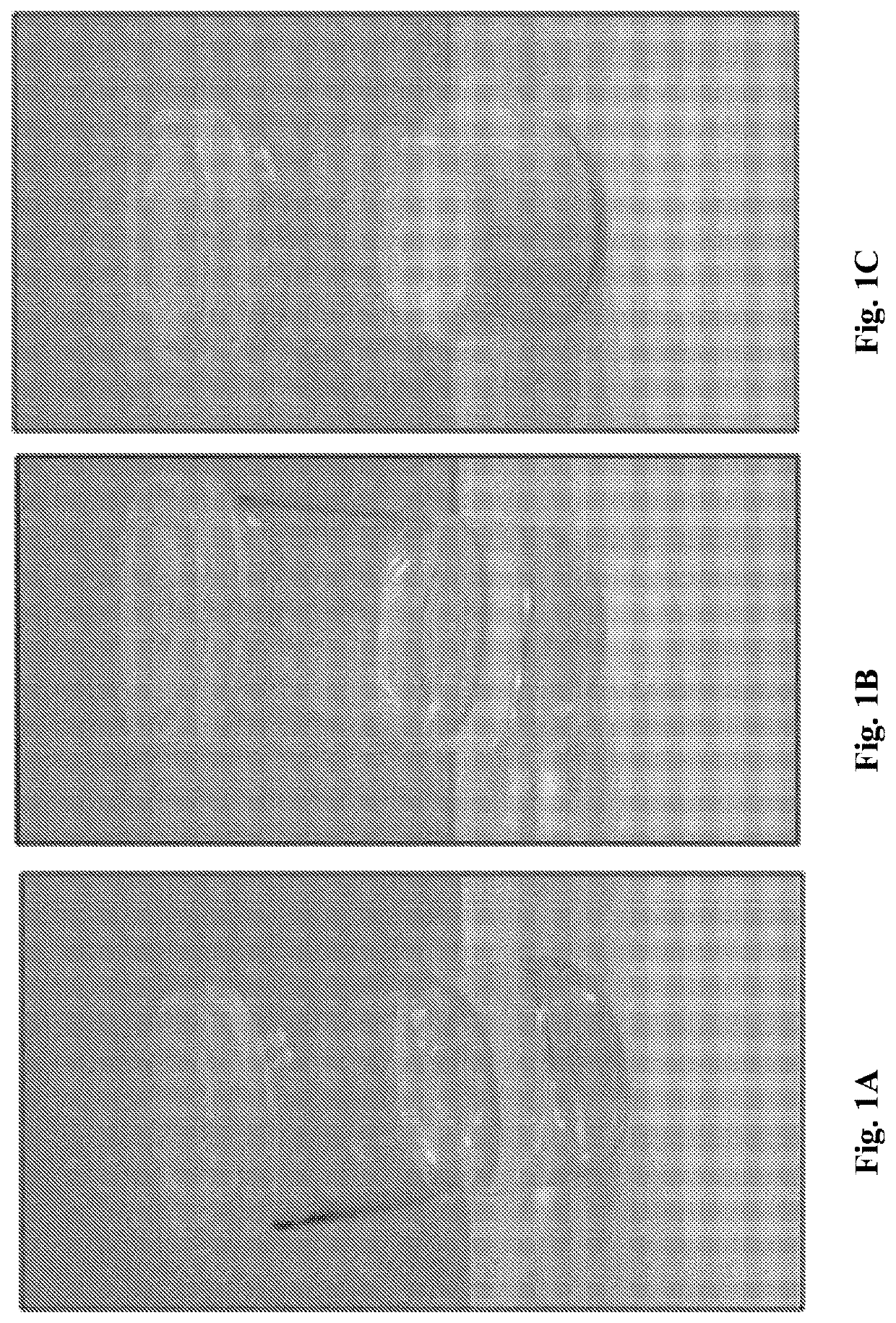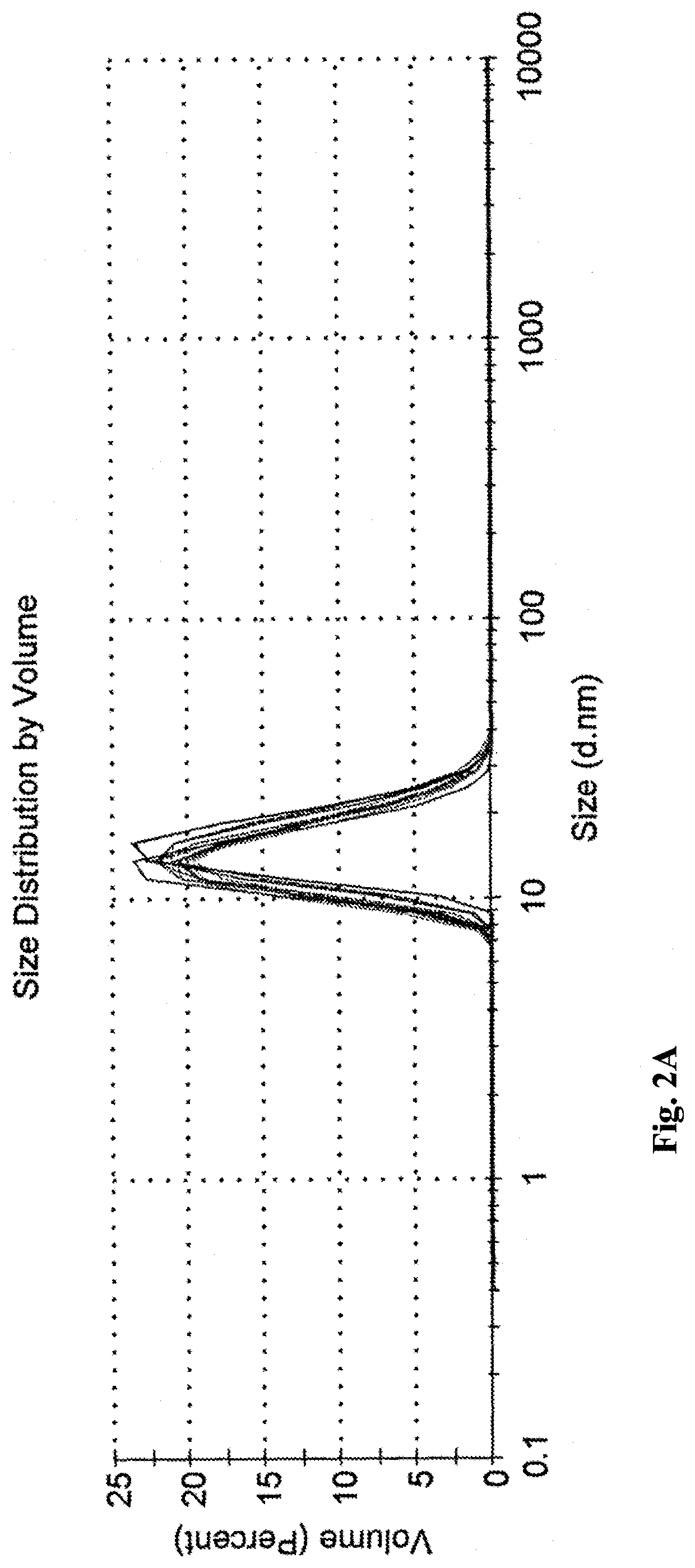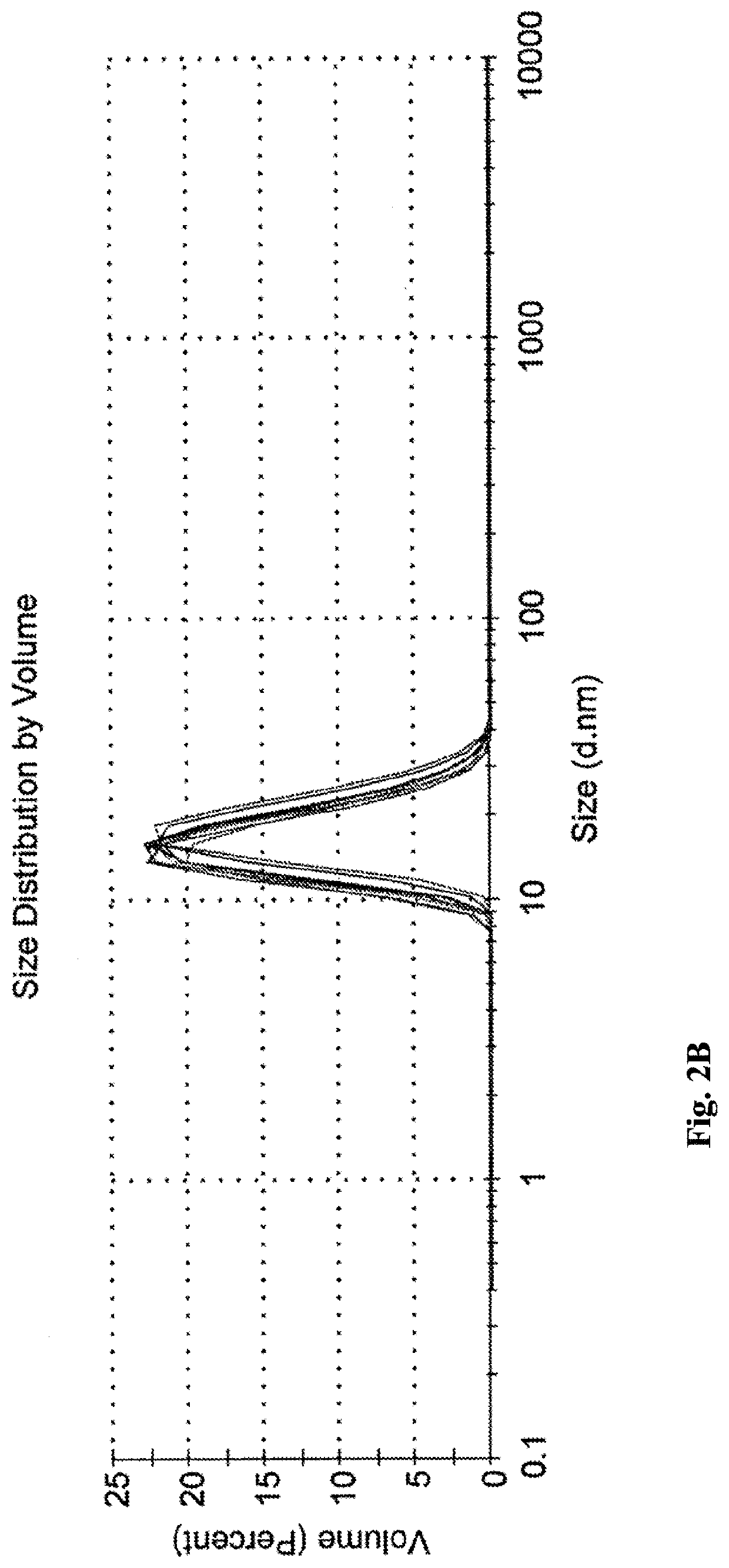Delivery systems for propofol
a delivery system and propofol technology, applied in the field of new dilutable delivery systems, can solve the problems of poor self-assembled structure, lack of water, and inability to support (or minimize) microbial growth
- Summary
- Abstract
- Description
- Claims
- Application Information
AI Technical Summary
Benefits of technology
Problems solved by technology
Method used
Image
Examples
example i
Microemulsions Compared to Commercial Emulsions
1 wt % propofol commercial liquid emulsion (CLE) Propofol-Lipuro® 1% was used as reference for comparison with the propofol-microemulsions of the invention.
Two dilutable propofol-concentrates were prepared, containing 6 wt % and 9 wt % of propofol (B6 and B9, accordingly), according to the following preparation protocol.
B6 Concentrate
Solutol HS-15 (also known as Kolliphor HS-15) was heated to about 40-60° C. Following heating, the Solutol was introduced into a vessel, together with propylene glycol (PG), MCT, polyethylene glycol 400 (PEG 400) and ethanol, and mixed for 10 minutes at 50-400 rpm. Egg Lecithin E80 (egg phospholipids with 80% phosphatidylcholin) was added, and mixed for 60 minutes, at 40-50° C. and mixed at 50-400 rpm. The mixture was then left to cool down to room temperature. Once the mixture has cooled, propofol was added and mixed form 5-30 minutes at 50-400 rpm, to thereby obtain a concentrate containing 6 wt % propofo...
example ii
icroemulsions Compared to Shear-Mixed Emulsions
Due to the poor solubility of propofol, the majority of propofol emulsions currently under research are produced by utilizing high-shear forces. It is important to note that although such emulsions are often inappropriately named “microemulsions” or “nanoemulsions” in literature (see, for example [1]), such emulsions are significantly different from those of the present invention.
In order to demonstrate the differences between shear-mixed emulsions and microemulsions of the present invention, the following comparative example was carried out.
Shear Mixed Emulsion
example 1
in [1] was selected as a representative example of a typical shear-mixed emulsion.
Unloaded Shear-Mixed Emulsion (without Propofol)
785 mg Labrafac™ CC (caprylic / capric triglyceride) and 527 mg Macrogol 15 hydroxystearate (also known as Solutol HS15) were precisely weighted into 20 ml glass vial. The mixture was heated to 40° C. for 15 minutes under agitation at 630 rpm and then cooled down to room temperature for 5 minutes.
A dispersing phase (0.9% w / v NaCl in water, i.e. physiological saline) was added to the mixture under agitation at 630 rpm until a final volume of 15 ml was obtained. The formulation was heated and mixed at 40° C. for an additional 10 minutes at 840 rpm. At this stage, prior to application of shear forces, the diameter of the droplets and PDI of the premix was determined by dynamic light scattering (Malvern Instrument, MAL500572, model ZEN1600).
The premix was then homogenized with a high-pressure homogenizer (IKA Labortechnik, Type T25B) at 10,000 psi for 105 secon...
PUM
| Property | Measurement | Unit |
|---|---|---|
| size | aaaaa | aaaaa |
| PDI | aaaaa | aaaaa |
| PDI | aaaaa | aaaaa |
Abstract
Description
Claims
Application Information
 Login to View More
Login to View More - R&D
- Intellectual Property
- Life Sciences
- Materials
- Tech Scout
- Unparalleled Data Quality
- Higher Quality Content
- 60% Fewer Hallucinations
Browse by: Latest US Patents, China's latest patents, Technical Efficacy Thesaurus, Application Domain, Technology Topic, Popular Technical Reports.
© 2025 PatSnap. All rights reserved.Legal|Privacy policy|Modern Slavery Act Transparency Statement|Sitemap|About US| Contact US: help@patsnap.com



